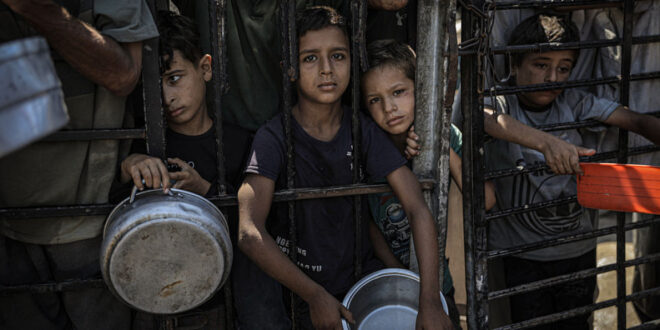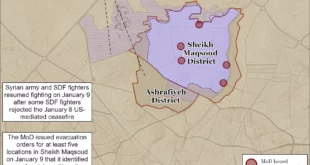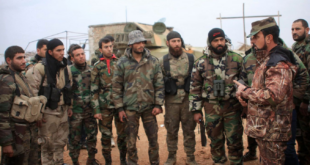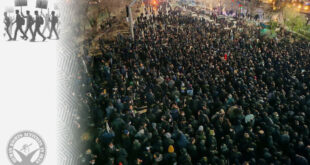The killings of aid seekers in Gaza has escalated into an undeniable pattern of war crimes, crimes against humanity, and acts of genocide, writes Riley Sparks. [GETTY]
Sarajevo, May 1992. Three mortar shells, believed to have been fired by Bosnian Serb forces, landed on besieged civilians waiting for bread at a busy market, killing 26 and wounding more than 100.
Three days later, the UN Security Council voted to sanction Yugoslavia, making the state an international pariah. Within weeks, as violence worsened, Security Council members agreed unanimously to expand peacekeeping operations, authorised the Secretary General to begin deploying troops, and started making plans to seize the Sarajevo airport to deliver aid to trapped civilians.
It didn’t stop the killing – and it took much longer to mount a truly effective response. But in the face of such an atrocity, the international community found the political will to at least try to respond with some urgency.
Gaza, January 2024: Israeli forces fired on civilians waiting for aid trucks bringing food to the blockaded north, killing seven and wounding several others. Two days later, they did the same thing again, in the same place, killing 12 and wounding dozens. Then again a few days later, and the next day, and the next – on and on, in what has become an undeniable and escalating pattern of atrocities.
Visible atrocities
To date, Israel has killed nearly 3,000 people seeking aid in the Gaza Strip and injured almost 20,000 others, according to a more than year-long investigation I recently published with The New Humanitarian. Both of these numbers are a conservative estimate.
The killings have now become so routine that Gaza’s Ministry of Health publishes three daily casualty figures: the overall number of people killed and wounded, the number who have starved to death, and the number killed or wounded while trying to collect aid.
All of these attacks around aid have been documented and reported by Palestinians in Gaza, and many by local and international media or the UN and other humanitarians. While much of the world didn’t learn about the Sarajevo massacres until the next day’s newspaper, videos and photos of most of the killings in Gaza are available live – open your phone now and it’s very likely you’ll see one.
In Sarajevo, when another 37 people were killed in a second mortar attack on the same market, about two years after the first, US ambassador to the UN Richard Holbrooke got on the phone to Washington immediately, demanding an urgent military response: “We’ve got to bomb.” Within days, NATO aircraft, in coordination with UN peacekeepers, began hitting Bosnian Serb military targets.
In Gaza, after that January 2024 strike on civilians waiting for aid trucks, there was no response. Instead, the international community and Israel’s western allies have either chosen passivity or active enablement. As a result, the killings of aid seekers in Gaza has escalated into an undeniable pattern of war crimes, crimes against humanity, and acts of genocide.
A clear pattern of violence
The New Humanitarian has been tracking these attacks for nearly 18 months. We have counted almost 200 incidents that took place between January 2024 and the end of July 2025.
While many individual incidents have been recorded, and previous reporting has described clusters of attacks in particular locations at particular times, we wanted to put them in context with other developments in Gaza and understand how they fit into the broader Israeli strategy.
We found a clear pattern of Israeli violence targeting civilians wherever they went to get food and other necessities of life – so many incidents with so many common elements that they must be intentional.
The patterns we observed suggest these attacks have been a key part of Israeli strategy for over 23 months – a tool used to take control and weaponise the availability of food and the necessities of life in Gaza, to forcibly displace people, and to inflict unliveable conditions on Palestinians.
This adds to a significant and growing body of evidence supporting charges against Israeli officials and the state as a whole. We therefore hope this database can be used as an aid to further investigation, research, and accountability efforts.
Like all of the other atrocities in Gaza, these killings have been enabled by Israel’s Western allies and the international community. In response to what we are all watching, the most powerful countries and institutions in the world have cultivated a sense that they are powerless to stop Israel’s actions, often while actively abetting them.
But powerlessness is a choice. In reality, as so many experts and activists have pointed out, there are many, many things that could be done, from Israel’s allies finally using some of their substantial leverage to pressure Israel and punish it for its blatant transgressions of international law, to humanitarian organisations taking bold, collective action to break Israel’s siege and uphold the values of humanity they espouse.
An eventual reckoning
In compiling our database and writing about these attacks, two sentences particularly bothered me. One, about an incident in March 2025: “Strike hit soup kitchen as civilians waited for food. Casualties mostly children.”
As writer Omar El Akkad has put it, every day you wake up and see images of the worst thing you can imagine. On this particular March day: a procession of adults delicately carrying and wheeling wounded children into a hospital – the kids silent, adults purposeful and reassuring, a drone buzzing overhead.
This shouldn’t be just a line in a spreadsheet. These are people. On an individual level, each act of violence being done to them – the emotional damage to their loved ones and communities – it reshapes their entire lives. Behind each number, there’s an entire world that’s been undone. When you allow yourself to tap into that realisation, you think, this must be enough to make us choose to make it stop. But it isn’t.
The second sentence, trying to summarise why we reported this: “For legal accountability and history”. It admits the short-term futility of our work. It’s like screaming into the void. We have been watching this horror for almost two years. And, as I write this, Israel is pushing nearly 1 million Palestinians, already suffering from a famine it caused, out of Gaza City to an uncertain fate.
This project originated from the sense of disbelief and shame shared by so many watching the same things happen over and over again, in broad daylight, with no meaningful response from those in power.
It is hopefully a small contribution to efforts to hold those responsible to account, whenever we come to our senses, put this to an end, and begin to grapple with what we, collectively, have allowed to happen.
 Eurasia Press & News
Eurasia Press & News



